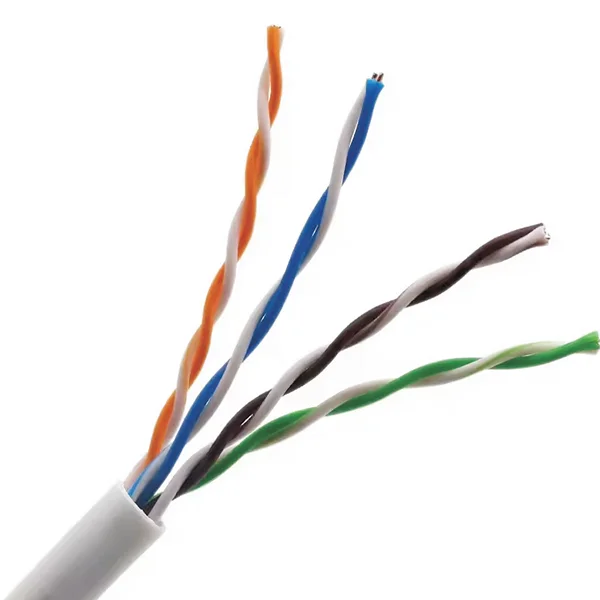- This topic is empty.
-
AuthorPosts
-
2025-09-12 at 11:42 am #81891
Introduction to Cat5e UTP Network Cable
The Cat5e UTP network cable remains one of the most widely used structured cabling solutions in modern networking. Designed with enhanced performance compared to traditional Category 5, Cat5e cables deliver stable transmission for data, voice, and video applications. In this blog post, Dingliang will share the reliability and versatility of Cat5e UTP Network Cable in residential and commercial networks, and its compatibility with various devices.
Transmission Performance of Cat5e Cables
The transmission performance of Cat5e UTP cables plays a vital role in maintaining high-quality connectivity. Supporting a frequency range of 1–100/155 MHz, these cables are optimized for 100 Mbps Ethernet and can also handle Gigabit Ethernet under specific conditions. This makes them an efficient option for home networks, office setups, and even small-scale data centers where stable throughput and minimal signal interference are required.
Oxygen-Free Copper Conductors in Cat5e UTP Cable
One of the standout features of high-quality Cat5e unshielded twisted pair cable is the use of oxygen-free copper conductors. With conductor sizes ranging from 0.445 mm to 0.52 mm, the copper core ensures excellent conductivity, reduced attenuation, and enhanced durability. Oxygen-free copper also minimizes signal distortion, ensuring that data transfer remains consistent and accurate, even over longer distances.

Sheath Material: PVC, LSZH, and PE Options
The outer sheath material of Cat5e UTP network cable contributes significantly to safety, durability, and environmental adaptability.
-
PVC (Polyvinyl Chloride): A common, cost-effective option offering flexibility and adequate flame resistance.
-
LSZH (Low Smoke Zero Halogen): Ideal for indoor installations where fire safety is critical, as it reduces toxic smoke emissions.
-
PE (Polyethylene): Suitable for outdoor environments, providing superior resistance to moisture, UV rays, and physical wear.
This diversity of sheath materials allows Cat5e cables to be deployed in varying conditions, from residential ceilings to outdoor conduits.
Compliance with YD/T Standards
The Cat5e UTP cable complies with rigorous Chinese telecommunication industry standards, including YD/T 1019-2013 and YD/T 1019-2023. These standards ensure performance consistency, structural safety, and compatibility across multiple networking systems. Compliance guarantees that the cable can handle demanding networking tasks while maintaining electrical and mechanical reliability.
Cat5e UTP Network Cable for Device Connectivity
One of the most common applications of Cat5e cables is to provide wired connections between devices. Whether connecting a router, computer, TV box, smart TV, or game console, the cable ensures high-speed and stable data transfer. Unlike wireless connections that may suffer from interference, Cat5e wired connections guarantee uninterrupted streaming, online gaming performance, and secure data exchange.
Role of Cat5e UTP Cable in Smart Home Systems
The rise of smart homes has expanded the use of Cat5e unshielded twisted pair cables beyond traditional networking. By integrating into systems such as smart lighting, smart security, automated curtains, smart washing machines, refrigerators, and air conditioners, Cat5e provides a stable backbone for home automation. Unlike wireless networks that may face instability or bandwidth congestion, wired Cat5e connections ensure seamless control and monitoring of smart devices.
Comparing Cat5e UTP Cable with Other Network Cables
While newer categories such as Cat6 or Cat6a offer higher bandwidth, Cat5e UTP network cables remain a cost-effective choice for many installations. Cat5e provides sufficient speed for everyday tasks, making it ideal for:
-
Home offices requiring video conferencing and stable browsing.
-
Small businesses needing reliable point-of-sale systems.
-
Residential setups where multiple devices stream and game simultaneously.
Its balance of performance and affordability makes it the go-to choice when ultra-high-speed bandwidth is not essential.
Advantages of Choosing Cat5e UTP Cable
-
Stable Performance: Enhanced twisted pair design minimizes crosstalk and interference.
-
Durability: Oxygen-free copper and strong sheathing materials extend service life.
-
Versatility: Applicable in both home and business environments.
-
Cost Efficiency: Provides reliable Gigabit performance at a fraction of the cost of higher-category cables.
-
Compatibility: Works seamlessly with legacy and modern networking equipment.
Installation Considerations for Cat5e UTP Network Cable
To maximize the efficiency of Cat5e UTP network cable installation, a few factors must be considered:
-
Avoid sharp bends to prevent conductor damage.
-
Keep cables away from strong electrical currents to reduce interference.
-
Select sheath material based on the installation environment (indoor PVC, LSZH for safety, PE for outdoor use).
-
Follow structured cabling standards to maintain consistent performance across the network.
Future Outlook of Cat5e UTP Network Cable
Although higher categories of cables are being developed to support faster internet speeds, Cat5e unshielded twisted pair cable continues to hold relevance. Its affordability and reliability make it suitable for most residential and small-business applications. As smart homes and IoT devices proliferate, Cat5e remains an accessible and stable solution to ensure consistent connectivity.
Conclusion
The Cat5e UTP network cable strikes a balance between cost, performance, and versatility. With oxygen-free copper conductors, flexible sheath options, and compliance with YD/T standards, it provides reliable networking for both traditional and modern applications. Whether connecting everyday devices or supporting smart home ecosystems, Cat5e continues to serve as a dependable foundation for digital connectivity.
http://www.dlelectronic.com
Dingliang -
-
AuthorPosts
- You must be logged in to reply to this topic.